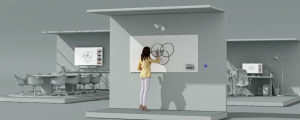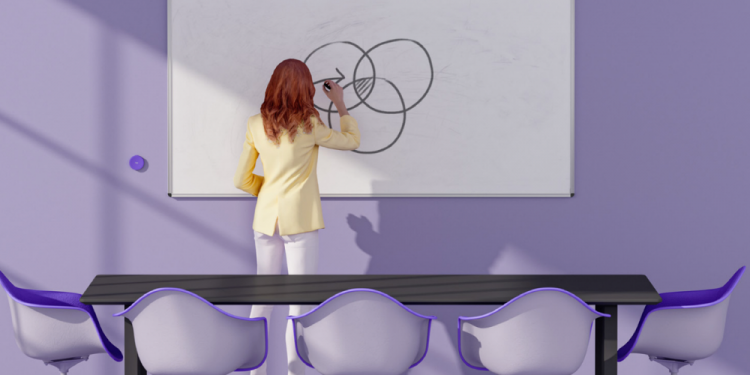Whiteboards are a perfect tool for brainstorming, teaching, and team collaboration. That’s why they’re ubiquitous in meeting rooms and classrooms and ideal for in-person meetings and classes. However, whiteboards are not as widely used in video meetings — and even when they are, the whiteboard is often difficult to see for remote participants and students.
…………………………………..
Given how useful whiteboards are in diverse situations, it is often painful to see people not being able to leverage its advantages- for various reasons specific to the setting. So how can meeting hosts and teachers make whiteboards just as valuable for virtual meetings and classes? As people return to the office and look forward to working together in person again, they have the benefit of a new perspective.
Working remotely for a year or more has taught many of us the value of collaboration and the challenges of replicating that experience while working from home. In the field of education, teachers and students alike have similarly learned first-hand the limitations of remote learning.
And yet, both remote work and remote learning are likely to continue, perhaps indefinitely. Many companies and schools are therefore eager to ensure that remote workers and remote students feel engaged and involved in the collaboration and learning process, wherever they happen to be.

Logitech set out to solve a specific problem that directly impacts remote collaboration and remote learning. With a view to giving employees and educators the ability to seamlessly integrate whiteboards — a key tool of collaboration and teaching – into video meetings and virtual classrooms, it worked diligently and came out with a perfect solution.
The problem with using whiteboards in a video meeting or virtual classroom is that they are typically difficult to see by remote attendees. The whiteboards are often too far from the camera, off to one side, or blocked by people and furniture. This situation can be frustrating for remote attendees.
Worse, it often leaves them out of the discussion. Their ability to follow along is reduced, and any input they might have offered is lost.
 Logitech’s solution to this problem is the Scribe, an AI-powered whiteboard camera that effortlessly shares whiteboards into video meetings and classes with outstanding clarity. It works beautifully with Microsoft Teams Rooms, Zoom Rooms, and other leading video conferencing services. Scribe makes it easy to incorporate your whiteboard into
Logitech’s solution to this problem is the Scribe, an AI-powered whiteboard camera that effortlessly shares whiteboards into video meetings and classes with outstanding clarity. It works beautifully with Microsoft Teams Rooms, Zoom Rooms, and other leading video conferencing services. Scribe makes it easy to incorporate your whiteboard into
any virtual meeting or classroom.
With a view to explaining how well the Scribe works, Logitech recently made a live demonstration of the whiteboard camera in a webinar that was found to be extremely useful.
It can be accessed at on demand at https://info.logitech.com/webinar-get-on-board-scribe-amr-en-061521.html
The discussion revolved around various options people have tried in an effort to incorporate
whiteboards into their meetings. Typical options include pointing the conference camera at the whiteboard, taking photos of the whiteboard session and sending them to attendees, and using pricey digital whiteboards. Each of these ideas has limitations that prevent them from being widely adopted.
Scribe benefits were outlined, including the way it leverages AI to:
- Enhance writing on the board so it’s clearly visible
● Remove the presenter so he or she does not block the view
● Automatically detect the size of the whiteboard
● Correct for skewing so the image is represented accurately





















